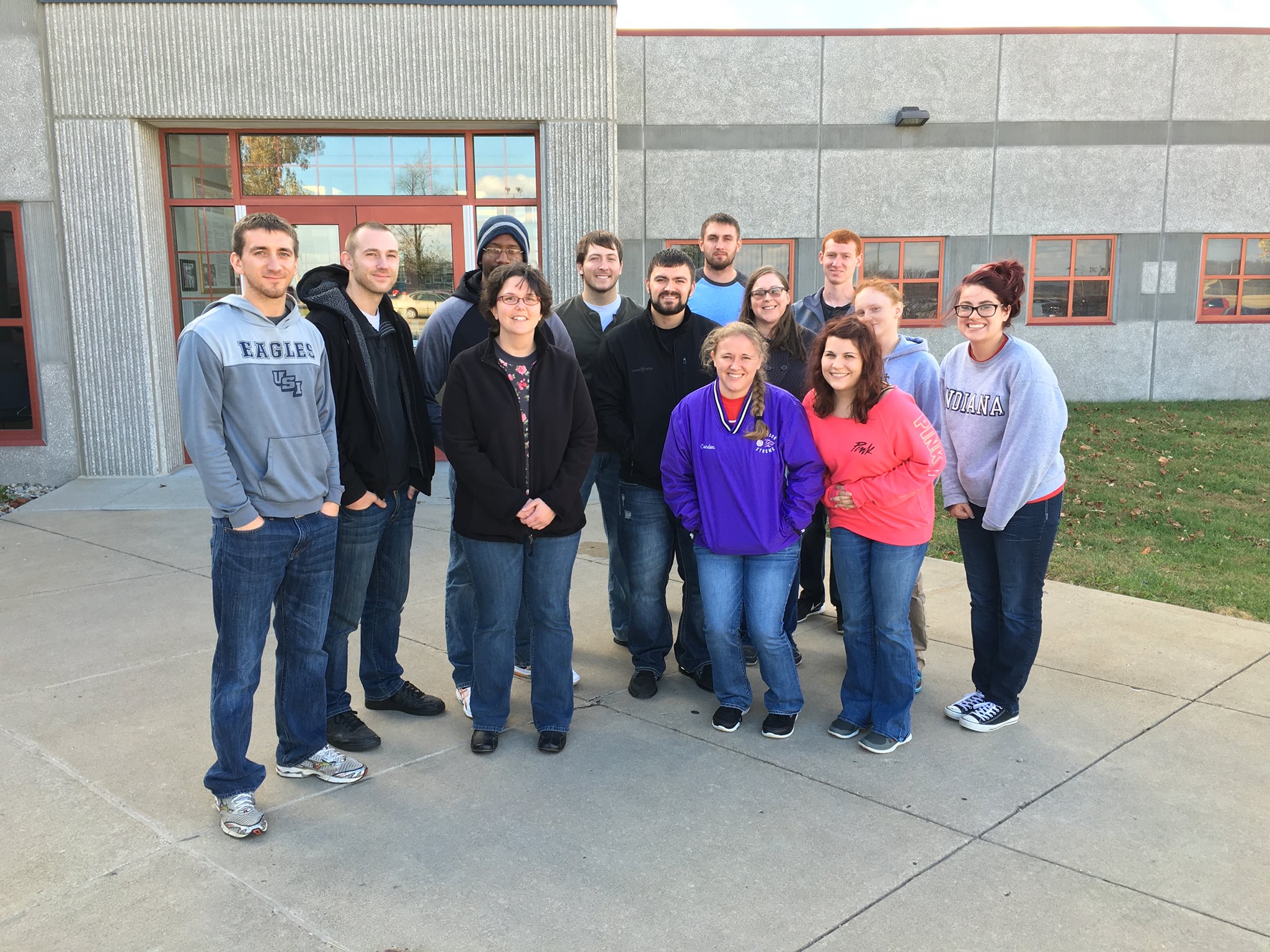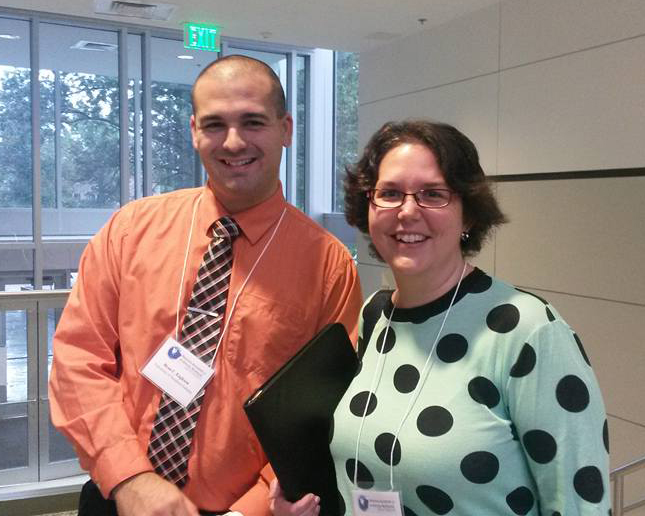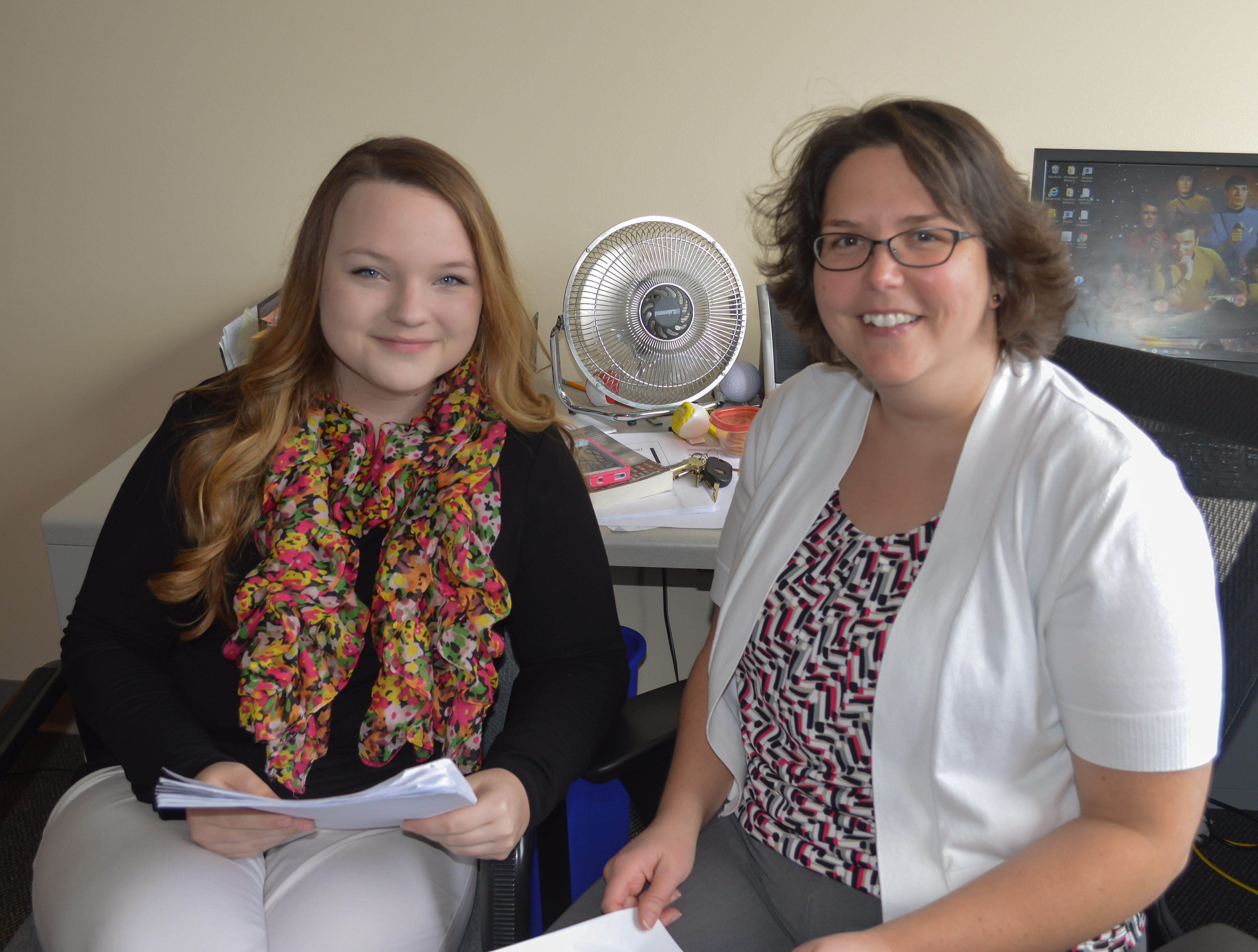Dr. Melissa Stacer is an Associate Professor of Criminal Justice at the University of Southern Indiana. Her teaching and research interests are in the area of corrections, specifically institutional corrections (jails and prisons). Additional research interests are in prison culture, prisoner misconduct, reentry, collateral consequences of incarceration, and criminal justice education. Dr. Stacer teaches courses on corrections, prisons, death penalty, the effects of incarceration, community corrections, and criminological theory. Below, she discusses the unique ways she has been able to interact with her students and include them in her research in jails and prisons.

Researching with Students
I have been taking USI criminal justice students to tour local jail facilities and prisons in Indiana and Kentucky since 2011. I feel very strongly that if students want to work in the criminal justice field, they need to be exposed to criminal justice institutions, so these tours are one way to give them a glimpse into corrections. Their essays about the tours showed me how powerful these experiences were for them, prompting me in 2013 to begin a more formal investigation into the impact correctional tours have on students. Initially conceived with Dr. Monica Solinas-Saunders of Indiana University Northwest, this research included pre-tour and post-tour surveys and analyses of student essays. This design of this project was perfect for including student research assistants. I was fortunate to find two incredibly gifted students to invite onto this project. While I was initially interested in simply finding help in managing and analyzing the data, I was able to find two students who were talented and committed to the project who became co-authors on presentations and published manuscripts.
 Beginning in Spring 2015, Ryan Eagleson ’16 was instrumental in the last phase of data collection, inputting the data into electronic format, and analyzing the survey results. Ryan learned how to use “SPSS,” statistical software that we use to analyze data. In addition to quantitative analyses, he also coded open-ended qualitative items on the surveys in order for us to analyze these quantitatively. Together with Dr. Solinas-Saunders, we presented our paper at the Indiana Academy of the Social Sciences conference in October 2015 and had our manuscript published by the Journal of Criminal Justice Education in 2017. In this paper, titled “Exploring the Impact of Correctional Facility Tours on the Perceptions of Undergraduate Criminal Justice Students,” we compared the surveys from before and after students toured a jail or prison. We found that student perceptions of correctional officers improved significantly after going on a tour, with students being more likely to indicate after the tour that correctional officers are caring and willing to help inmates. Ryan is now a Patrol Officer with the Evansville Police Department and a current Master of Business Administration (MBA) student at USI.
Beginning in Spring 2015, Ryan Eagleson ’16 was instrumental in the last phase of data collection, inputting the data into electronic format, and analyzing the survey results. Ryan learned how to use “SPSS,” statistical software that we use to analyze data. In addition to quantitative analyses, he also coded open-ended qualitative items on the surveys in order for us to analyze these quantitatively. Together with Dr. Solinas-Saunders, we presented our paper at the Indiana Academy of the Social Sciences conference in October 2015 and had our manuscript published by the Journal of Criminal Justice Education in 2017. In this paper, titled “Exploring the Impact of Correctional Facility Tours on the Perceptions of Undergraduate Criminal Justice Students,” we compared the surveys from before and after students toured a jail or prison. We found that student perceptions of correctional officers improved significantly after going on a tour, with students being more likely to indicate after the tour that correctional officers are caring and willing to help inmates. Ryan is now a Patrol Officer with the Evansville Police Department and a current Master of Business Administration (MBA) student at USI.
 In Fall 2016, I became fortunate once again to find another outstanding student to work with me on this project. Lydia Moll ’18 worked with me to qualitatively code and analyze the student essays, and she was responsible for writing the results sections for several different themes. After initial training, Lydia and I first worked independently each week to code the essays according to the particular theme upon which we were focusing, and then we would meet to go over the codes, discussing any discrepancies and coming up with more focused categories. Lydia and I, again assisted by Dr. Solinas-Saunders, were able to present various parts of these analyses at five different conferences, including the Academy of Criminal Justice Sciences conference in March 2017 in Kansas City, MO, the North Central Sociological Association conference in March 2017 in Indianapolis, the American Society of Criminology conference in November 2017 in Philadelphia, PA, the Indiana Academy of the Social Sciences conference in October 2018 in New Albany, IN, and the Western Society of Criminology conference in February 2019 in Honolulu, HI. In 2018, the first paper utilizing the qualitative data was accepted for publication in the Journal of Criminal Justice Education. This paper, titled “New Opportunities or Closing Doors? How Correctional Facility Tours Impact Students’ Thoughts about Correctional Careers,” explored how the correctional facility tour opened many students up to a new career opportunity in corrections or, in a few cases, made them definitely not want to consider such a career. The second paper using the student essays is currently under review. In that paper, we examined the influence of the media on what students expected to experience on the correctional tour. Students were asked to describe their perceptions prior to the tour in their essays and we found that many of them indicated the source of those perceptions as coming from various forms of media. We were able to supplement this with data from open-ended questions on the survey that were coded by Ryan Eagleson. Lydia, Dr. Solinas-Saunders, and I are also continuing to work on manuscripts related how students described the physical and social environments of the correctional facilities they toured and how they perceived inmates. Lydia is currently a student in the Master of Social Work (MSW) program at USI.
In Fall 2016, I became fortunate once again to find another outstanding student to work with me on this project. Lydia Moll ’18 worked with me to qualitatively code and analyze the student essays, and she was responsible for writing the results sections for several different themes. After initial training, Lydia and I first worked independently each week to code the essays according to the particular theme upon which we were focusing, and then we would meet to go over the codes, discussing any discrepancies and coming up with more focused categories. Lydia and I, again assisted by Dr. Solinas-Saunders, were able to present various parts of these analyses at five different conferences, including the Academy of Criminal Justice Sciences conference in March 2017 in Kansas City, MO, the North Central Sociological Association conference in March 2017 in Indianapolis, the American Society of Criminology conference in November 2017 in Philadelphia, PA, the Indiana Academy of the Social Sciences conference in October 2018 in New Albany, IN, and the Western Society of Criminology conference in February 2019 in Honolulu, HI. In 2018, the first paper utilizing the qualitative data was accepted for publication in the Journal of Criminal Justice Education. This paper, titled “New Opportunities or Closing Doors? How Correctional Facility Tours Impact Students’ Thoughts about Correctional Careers,” explored how the correctional facility tour opened many students up to a new career opportunity in corrections or, in a few cases, made them definitely not want to consider such a career. The second paper using the student essays is currently under review. In that paper, we examined the influence of the media on what students expected to experience on the correctional tour. Students were asked to describe their perceptions prior to the tour in their essays and we found that many of them indicated the source of those perceptions as coming from various forms of media. We were able to supplement this with data from open-ended questions on the survey that were coded by Ryan Eagleson. Lydia, Dr. Solinas-Saunders, and I are also continuing to work on manuscripts related how students described the physical and social environments of the correctional facilities they toured and how they perceived inmates. Lydia is currently a student in the Master of Social Work (MSW) program at USI.
Working with students on research has been incredibly gratifying. These two students were able to gain an in-depth knowledge of the research process because they were actively involved in producing scholarship. Ryan was involved in data collection, statistical analysis, writing the manuscript, presenting at a conference, and the publication process. Lydia was able to conduct qualitative data analysis, manuscript preparation, present at multiple conferences, and experience the publication process. Having students involved in research has been mutually beneficial for the students and for myself. These two students were not merely cogs in the wheel; they were involved throughout the research process, responsible for data analysis, creating and giving presentations, and writing publishable manuscripts. They both showed a commitment to this project that I did not initially expect. Though both were initially compensated with independent study credit or an hourly wage, both were involved in the project after such compensation ended – Lydia is STILL involved, nearly two years after I stopped paying her! The growth that both illustrated while working on this project was very apparent to me as they continued learning about the research process by actually doing research. They may have started out as students, but they grew to be come scholars.